Last updated: January 30, 2019
Article
2017 Science Education Grants
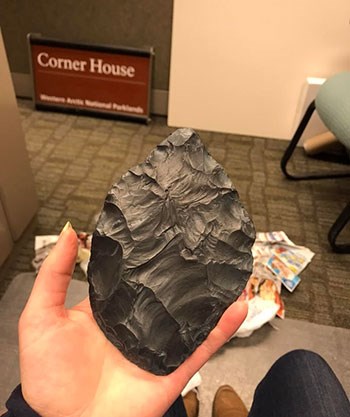
Located in the heart of Kobuk Valley National Park, Onion Portage is one of the most significant heritage sites in Northern Alaska. In 2017, artifact casts of archaeological resources found at Onion Portage were commissioned to compliment a lesson plan created to teach students and visitors about the excavation. The lesson plan includes historic photos and oral history interviews from local research assistants. While the artifact casts were recently completed, the lessons were shared with students at Onion Portage for the 2017 caribou collaring project, as well as during Inupiaq Day at the Ambler High School
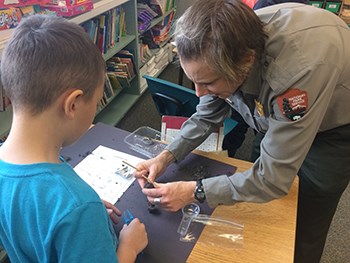
In October 2017, park service scientists and educators offered a two-day outreach event in Circle, Alaska. Since 1975, Circle has been the launch site for Yukon-Charley Rivers National Preserve’s annual American Peregrine Falcon surveys. Despite their close proximity to the preserve, many residents are unfamiliar with the peregrine monitoring project. During the event, researchers shared the excitement and wonder inspired by these amazing falcons to promote a better understanding of the National Park Service’s (NPS) mission, and provided information about possible career and volunteer opportunities for youth within NPS and partner organizations. Through educational outreach activities, including owl pellet dissection, a community dinner, and a media and storytelling workshop for youth, we built friendships with Circle and Central residents and involved students in Alaska park science.
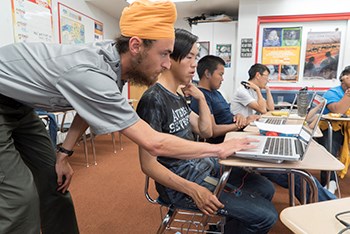
NPS Photo / Sean Tevebaugh
In 2017, park service media specialists offered two media workshops in the communities of Nenana, and Circle, Alaska. These communities were chosen as they are adjacent to the nearby park units of Denali National Park and Yukon-Charley Rivers National Preserve. The workshops gave local students an opportunity to explore park related topics through video production, learning valuable skills in teamwork and digital workflow. The workshops culminated in the development of short video products, produced either individually or as a team. Students left the experience with enhanced communication skills and a newfound enthusiasm for media.
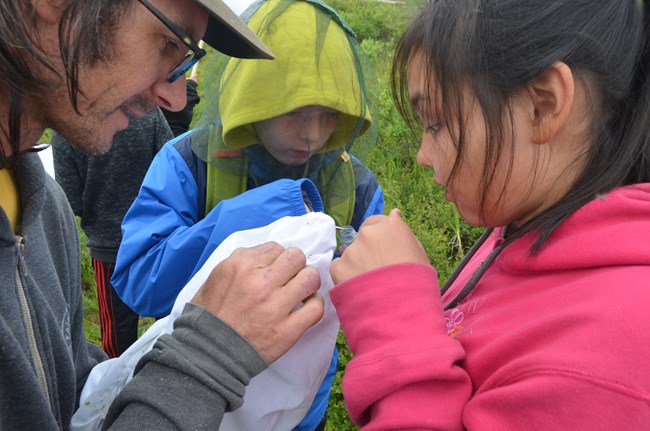
NPS Photo / Lia Nydes
BioBlitz 2017 invited 14 students, ages 12 – 15, from throughout the Bering Strait region to Serpentine Hot Springs for a multi-day science camp. BioBlitzers from Shaktoolik, Shishmaref, Teller, and Nome joined scientists, park rangers, and leaders from the Arctic Inventory and Monitoring Network, University of Alaska Fairbanks, Alaska Department of Fish & Game, the Student Conservation Association, and Nome Public Schools for four days of exploration and discovery! Participants identified birds through song, discovered tiny insects with nets and hand lenses, studied plant and lichen diversity with hula hoops, hiked through granite tors, painted with watercolors under the midnight sun, built friendships, made countless s’mores, and so much more! It was an incredible experience for all!
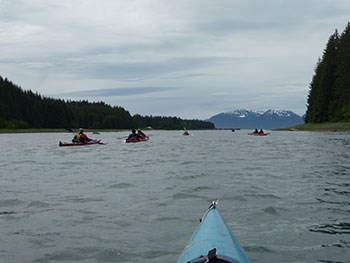
In June of 2017, seven youth from southeastern Alaska joined National Park Service rangers, a representative from Sitkans Against Family Violence, and experienced kayak guides for a multi-day backcountry kayaking trip in Glacier Bay National Park and Preserve. The youth, many of whom had never kayaked or camped before, learned invaluable backcountry travel, teamwork, and leadership skills that they can use in the future as they continue to explore remote Alaskan wilderness. These opportunities fostered a sense of self confidence, group comradery and a greater appreciation for wilderness. Following the kayaking trip, participants met with Alaska Native culture bearers and National Park Service rangers to learn more about the rich natural and cultural history of this remote national park, and gain a better appreciation for their public lands.
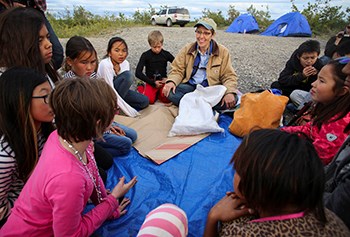
Western Arctic National Parklands offered a highly anticipated science camp in its 9th year called Camp Willow. Camp Willow is for underserved Native Alaskan youth ages 10-15, and it continues to grow in popularity. During the camp, students worked alongside park rangers and were able to observe exactly what it’s like to be a field biologist. This year an incredible fifteen voles were captured in student’s live traps, the likes of which have never been seen before in this area! The number of voles usually captured is zero to two. From pitching tents to testing research equipment, we fostered the next generation of biologists while creating memories the students took home and shared for the rest of their lives.
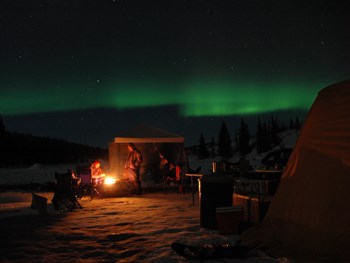
Camp Chosen Frozen is now in its 4th winter season here in Wrangell-St. Elias. This program invites 7th and 8th grade students to experience winter activities such as snowshoeing, x-country skiing, fire starting, Leave No Trace, and subsistence practices such as muskrat and beaver trapping and ice fishing. The 50 – 70 students who participate each year get to sleep in a Quinzhee (that they build), or an Arctic Oven, thereby experiencing firsthand the winter wonderland around them. The camp is run by the National Park Service in partnership with numerous organizations and agencies including the Wrangell Institute for Science and Environment, the Bureau of Land Management, the Campbell Creek Science Center, the Copper River School District, and Alaska Geographic.
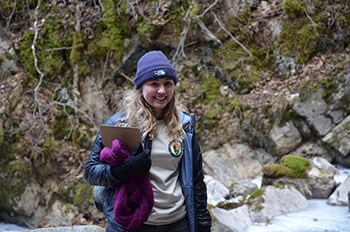
In 2017, Klondike Gold Rush National Historical Park used MSLC funds to hire a media intern who helped to set up the park’s distance learning program. The new program will allow students throughout the country to connect with the park via video conferencing systems. The intern also developed “The Geology of Gold” a curriculum-based lesson plan which will be offered via distance learning. The lesson explores how gold is formed and how this led to the Klondike gold rush. In addition, the intern maintained the Junior Ranger Program, conducted local school field trips, and posted social media posts.
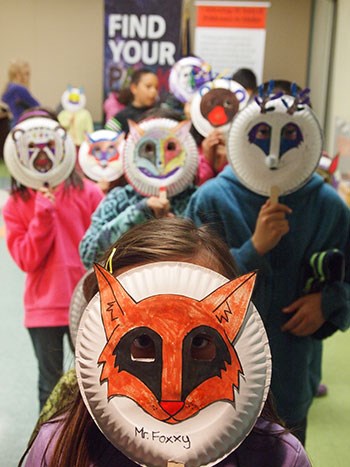
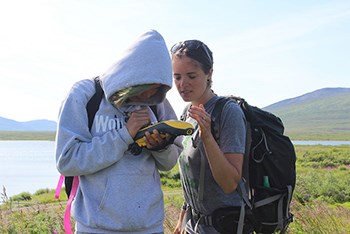
This was the third year that the National Park Service and park partners offered the Nome Archeology Camp in northwestern Alaska. During the camp, high school students from rural Alaska visited archaeological sites to practice survey techniques, interviewed elders and local experts during an oral history workshop, collected samples with fish biologists, and toured local museums and cultural centers to learn how exhibits are created and shared with the public. The camp emphasized the interplay between science and culture and that Native histories and practices can coexist with scientific inquiry. It also trained the next generation of scientists to study the regions’ resources in a responsible manner. Support was provided by Alaska Geographic, Bering Straits Native Corporation, and the Carrie M. McLain Museum.
Tags
- bering land bridge national preserve
- cape krusenstern national monument
- glacier bay national park & preserve
- klondike gold rush national historical park
- kobuk valley national park
- noatak national preserve
- sitka national historical park
- wrangell - st elias national park & preserve
- yukon - charley rivers national preserve
- microgrant
- microgrants
- science education
- research learning center
- research learning centers
